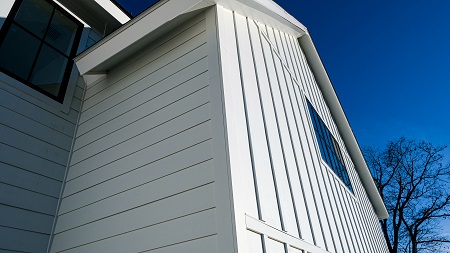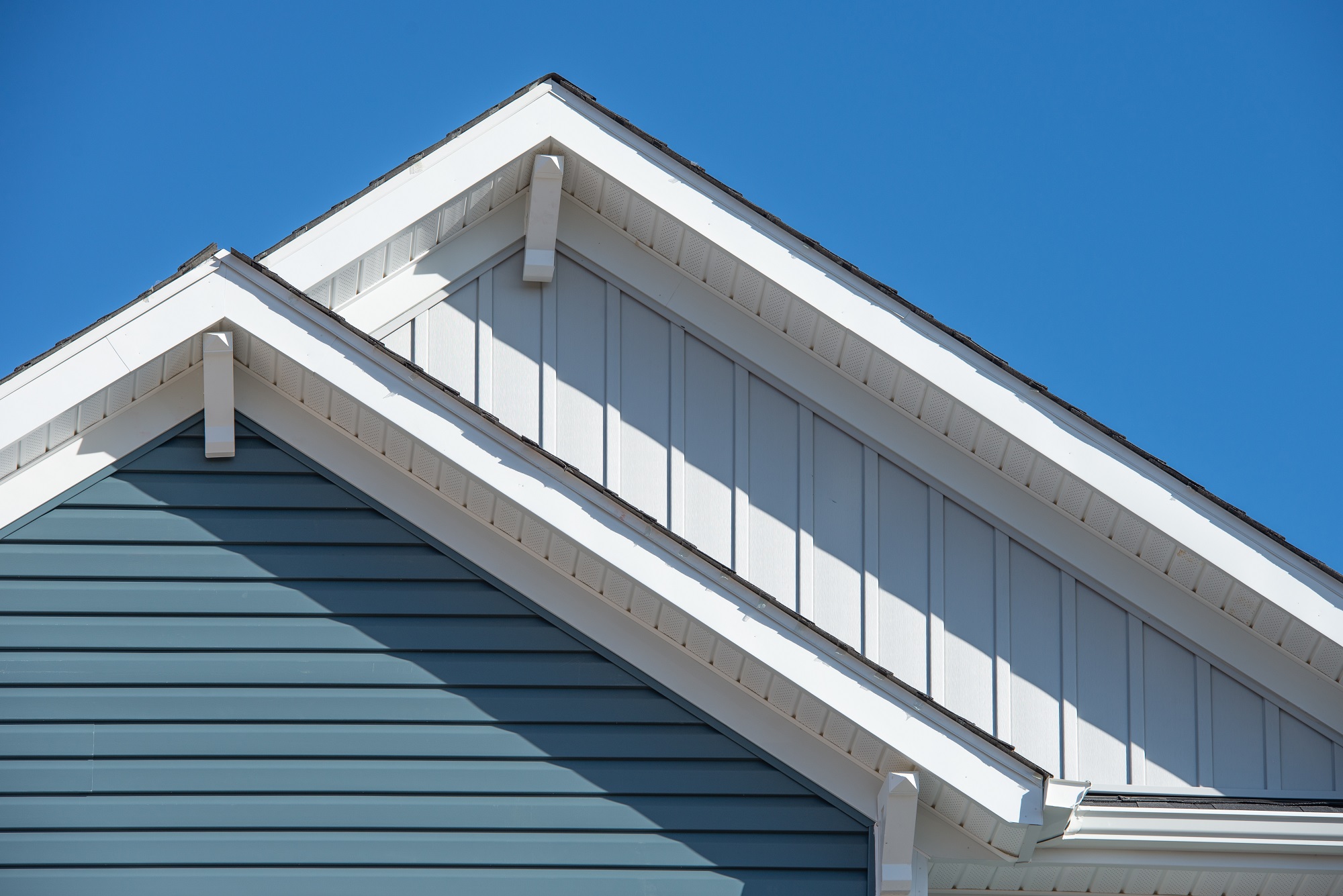You’re ready to revamp your home’s exterior, but you’re unsure about the costs? Don’t fret! We’re here to guide you on how to budget for your siding project.
You’ll learn to navigate material costs, understand labor expenses, and even find ways to snag great deals when you work with your siding contractor.
Understanding the Basics of Siding Costs
You have to understand the basics of siding costs to make a wise budgeting decision for your project.
The cost of siding can vary greatly depending on the preferred siding material you choose. Vinyl is usually the most affordable option.
Aluminum siding is a type of metal siding known for its durability. With proper maintenance, it can last over 50 years due to its resistance to rust. Aluminum siding is also one of the most affordable options available. However, the installation costs can drive up the overall price.
Genuine wood, also known as natural wood, can be quite expensive when you consider the cost of maintenance. However, if you choose genuine wood siding, it will cost you about the same as fiber cement siding. The specific grain and grade of the wood, as well as the style you want, will also affect the overall cost.
Stucco siding is available in one form option-wise, but there are various sub-options that allow for aesthetic customization. Stucco is a mixture of sand, cement, and lime, which creates a plaster-like material that is durable in different weather conditions.
Brick siding is commonly known as brick veneer. You have the choice between full brick veneer or thin brick veneer. However, thin brick is not usually recommended because it is less durable and significantly reduces insulation compared to traditional brick siding. Brick siding tends to be a bit more expensive than other material options.
Don’t forget to factor in labor costs, which can account for up to 50% of the total project cost.
Mapping Out Your Siding Project Plan
Let’s move on to mapping out your siding project plan, which is crucial for smooth execution and completion.
You’ve got your budget sorted, and now it’s time to think about logistics. Start by identifying the scope of your project and the specific tasks involved.
Measure your home’s exterior walls to determine the area that needs siding, then calculate the amount of material needed. You’ll need to account for waste, so add an extra 10% to your total.
It’s also crucial to anticipate potential hurdles like weather delays or material shortages.
Lastly, don’t forget to factor in time for cleanup and disposal of old siding.
How to Choose the Right Siding Material for Your Budget
In choosing the right siding material for your budget, you’ll want to consider factors like durability, maintenance, and aesthetic appeal. It’s not all about the price tag; it’s about making a smart investment that enhances your home’s value.
1. Durability: High-quality materials may seem expensive, but they’re more resistant to weather and wear, saving you replacement costs down the line.
2. Maintenance: Low-cost materials might require frequent and expensive upkeep. Opt for those that don’t need constant attention.
3. Aesthetic Appeal: Don’t compromise on your home’s look. A good siding can elevate your property’s appeal, making it a joy to come home to.
Ultimately, balance your budget with these considerations. Remember, it’s not about cutting corners but making informed choices.
The Role of Labor Costs in Your Siding Budget
While you’re balancing the costs of materials for your siding project, don’t forget to factor in labor costs, for they can significantly influence your overall budget. Remember, it’s not just about buying materials; you’re also paying for expertise, time, and skill.
A ballpark figure you can use is that labor may add another 50% to 60% to your material costs. However, this can vary depending on the complexity of the job and the contractor’s rates.
To ensure you’re getting a fair deal, get quotes from several contractors. Also, ask for a detailed breakdown of costs. This way, you’ll avoid hidden charges and can budget accurately.
Ways to Save: Siding Discounts and Deals
You’re hunting for siding discounts and deals, and it’s an effective way to trim down your project costs. It’s a practical strategy, but it requires savvy and patience. Besides, who doesn’t love a good bargain?
1. Shop during the off-season: Suppliers often reduce prices during winter. It’s their slow season, and they’re more likely to negotiate.
2. Bulk buying: If you’re tackling a large project, consider purchasing in bulk. Higher quantities often mean lower per-unit costs.
3. Check out clearance sales: Retailers regularly clear out old stock to make room for new products. You can find quality siding at a fraction of its original price.
The Impact of House Size and Shape on Siding Costs
Consider how your house’s size and shape can significantly impact siding costs and what you can do to mitigate this.
Simple geometry tells us that larger houses need more siding, which, in turn, ramps up the cost. But it’s not just size; a complex shape with many corners and irregularities also increases labor and material costs.
You can’t change your house’s size or shape, but you can make smart choices. Opt for a cost-efficient material that doesn’t compromise on longevity or aesthetics. Vinyl is a popular choice due to its affordability and durability. Also, consider prefinished siding; it might cost more initially, but you’ll save on painting costs. Lastly, get multiple estimates from reputable contractors to ensure you’re getting a fair price.
Preparing for Unexpected Siding Expenses
It’s crucial that you set aside an emergency fund for the potential unexpected expenses that can arise during a siding project. This fund can cover costs like unforeseen structural issues, material wastage, or weather-related delays.
1. Structural Issues: Discovering rot, mold, or structural damage after removing old siding can hit hard. This can add significant costs but it’s essential to fix before installing new siding.
2. Material Wastage: If you’ve miscalculated the amount of siding needed or mishaps occur during installation, you’ll need to order more materials. That’s an expense you didn’t plan for.
3. Weather-Related Delays: Inclement weather can delay your project, potentially incurring additional labor costs.
EvoSiding Does Affordable Siding Work

At EvoSiding, you’re getting top-quality craftsmanship, and yet our professional services are incredibly affordable.
You’ll find a full array of exterior siding services, from repair to replacement, tailored to your unique needs and budget.
With a wide variety of high-quality materials, including metal, James Hardie siding fiber cement, cedar siding, and other wood siding options, you’re sure to find a durable siding option.
You can trust our expert siding team’s commitment to honesty and dedication to customer satisfaction.
We will guide you through the process, ensuring you get the best bang for your buck and siding that will withstand the test of time.
Contact us to get started on your next siding project. We provide outstanding customer service.
Professional siding services we provide:
- Siding Installation
- Siding Repair Services
- Siding Replacement
- Commercial Siding Contractors
- Residential Siding Contractors
Visit our About Us page for more information about our siding company.

